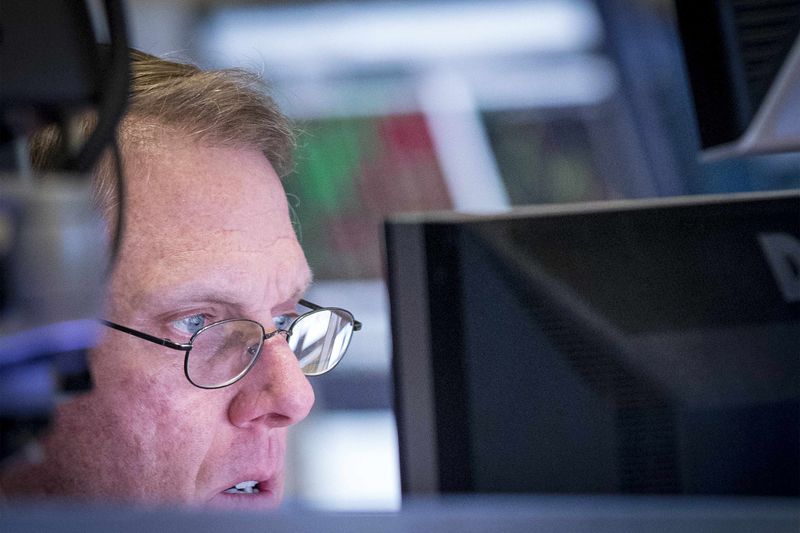Investing.com - Here are the top five things you need to know in financial markets on Friday, April 21:
1. Eyes on run up to French election
All eyes were on France Friday after a French policeman was shot dead and two others were wounded in central Paris on Thursday night in an attack claimed by the Islamic State militant group.
The attack came as market participants were eyeing the first round of the French presidential election due on Sunday, as recent polls have forecast the most likely outcome to be centrist Emmanuel Macron against far-right candidate Marine Le Pen.
Le Pen, well known for her anti-immigration stance, called on the government to immediately reinstate French borders and to expel foreigners monitored by intelligence services due to Thursday night’s incident.
In what is considered to be a close call of first round voting, investors are fearful over the prospect of a second round run-off, scheduled for May 7, between euro skeptics Le Pen and far left candidate Jean-Luc Melenchon, who both want to put the country’s European Union membership to a vote.
A victory from either party would be bearish for the euro and currency traders are set to start work in Australia before dawn Monday, as market players remember polls’ failure to predict the outcome of both the Brexit vote and the U.S. presidential election last year.
2. Global stocks show muted trade
Global stocks saw mostly muted trade on Friday as investors weighed in on a terrorist attack in Paris ahead of the first round of French elections.
Investors took a cautious stance in European equities while waiting for the results of the vote on Sunday with the Euro Stoxx 50 down 0.4% and Paris’ CAC 40 unwinding the prior day’s surge with losses of 0.6%.
Asia saw mixed trade but Japan's Nikkei 225 surged 1% as the country’s central bank chief Haruhiko Kuroda said he will keep accommodative policy in place.
U.S. futures pointed to a muted open as investors took a breather after U.S. Treasury Secretary Steven Mnuchin said that the administration was close to "major tax reform”, sending Wall Street higher on Thursday. At 5:46AM ET (9:46GMT), the blue-chip Dow futures inched up 0.01%, S&P 500 futures edged forward 0.05% and the Nasdaq 100 futures advanced 0.17%.
3. European economic activity hits 6-year high with U.S. PMIs on tap
On the data front Friday, investors were focused on readings of activity in manufacturing and service sectors on both sides of the Atlantic.
The euro zone composite purchasing managers’ index (PMI) registered a six-year high in April, pointing to an increase in growth at the start of the second quarter.
Stateside, Markit will release its PMIs for the U.S. at 9:45AM ET (13:45GMT) Friday.
Additionally, the National Association of Realtors will publish its report on existing home sales at 10:00AM ET (14:00GMT).
4. Oil on track for biggest weekly decline in a month
Oil traded near the unchanged mark on Friday, but was on track for weekly losses of more than 5%, its biggest decline in a month as U.S. gasoline stockpiles showed their first increase since February.
Investors were also cautious ahead of the latest weekly data on U.S. drilling activity which has been ramping up and threatening to counteract a deal between OPEC and non-OPEC countries including Russia to cut production in an attempt to reduce the global supply glut.
Last week, Baker Hughes said the weekly U.S. rig count rose by 11 to 683, for the thirteenth straight weekly increase near two-year highs.
U.S. crude oil futures slipped 0.02% to $50.70 at 5:48AM ET (9:48GMT), while Brent oil edged down 0.04% to $52.97.
5. Fed steps up pace on balance sheet normalization strategy
The Federal Reserve (Fed), intent on moving ahead with monetary policy normalization, has reportedly intensified discussions to plan out how it will shrink its $4.5 trillion balance sheet in a process that many Fed officials have said could start “later this year”.
Staff from the U.S. central bank are widening their consultations to bond fund managers in order to decide how they should tailor and communicate the balance sheet normalization as it seeks to exit its holdings of Treasuries and mortgage-back securities, according to a Bloomberg report.
The New York Fed’s regular survey of market participants, which is due back Monday, included several questions on the eventual balance-sheet exit, focusing on timing of the announcement to how many months it would take to shrink to a more appropriate level, according to the news agency.
Recent week data had caused markets to scale back expectations for rate hikes from the Fed, something that Goldman Sachs (NYSE:GS) warned could be an underestimation of the factors that point towards a steady and continuous policy tightening.
As of Friday, Fed fund futures put the odds of the first hike in June at 54.5% but priced in the probably of the central bank following through on its promise for two increases this year at only around 32%, according to Investing.com’s Fed Rate Monitor Tool.
